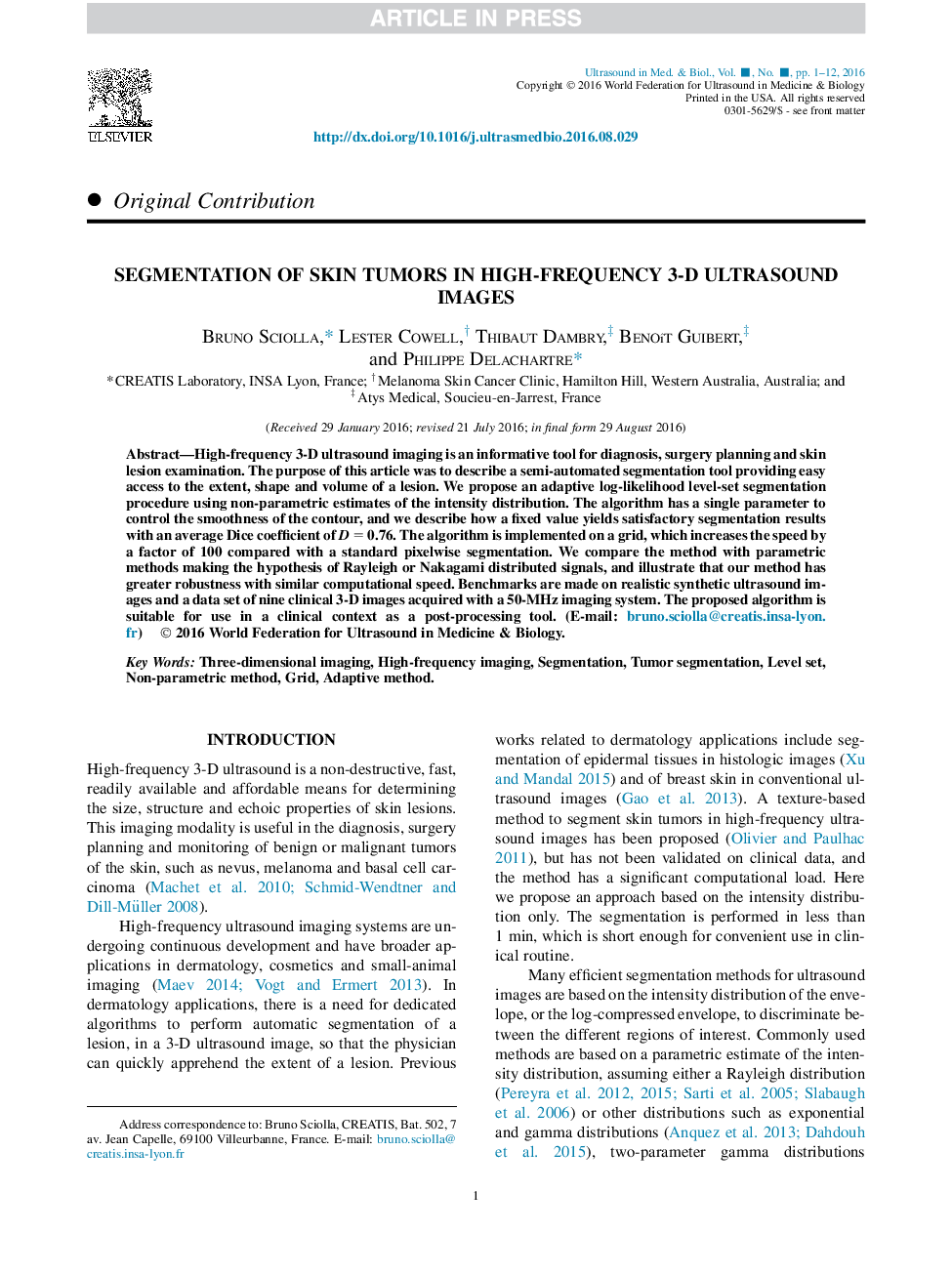| Article ID | Journal | Published Year | Pages | File Type |
|---|---|---|---|---|
| 5486013 | Ultrasound in Medicine & Biology | 2017 | 12 Pages |
Abstract
High-frequency 3-D ultrasound imaging is an informative tool for diagnosis, surgery planning and skin lesion examination. The purpose of this article was to describe a semi-automated segmentation tool providing easy access to the extent, shape and volume of a lesion. We propose an adaptive log-likelihood level-set segmentation procedure using non-parametric estimates of the intensity distribution. The algorithm has a single parameter to control the smoothness of the contour, and we describe how a fixed value yields satisfactory segmentation results with an average Dice coefficient of DÂ = 0.76. The algorithm is implemented on a grid, which increases the speed by a factor of 100 compared with a standard pixelwise segmentation. We compare the method with parametric methods making the hypothesis of Rayleigh or Nakagami distributed signals, and illustrate that our method has greater robustness with similar computational speed. Benchmarks are made on realistic synthetic ultrasound images and a data set of nine clinical 3-D images acquired with a 50-MHz imaging system. The proposed algorithm is suitable for use in a clinical context as a post-processing tool.
Keywords
Related Topics
Physical Sciences and Engineering
Physics and Astronomy
Acoustics and Ultrasonics
Authors
Bruno Sciolla, Lester Cowell, Thibaut Dambry, Benoît Guibert, Philippe Delachartre,
